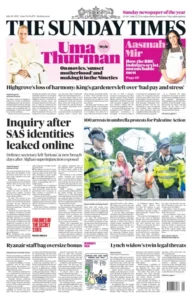The landscape of American consumer sentiment has recently been marked by a notable resurgence, suggesting that the dire impacts of President Donald Trump’s tumultuous trade war may be subsiding. According to the latest survey conducted by the University of Michigan, consumer sentiment saw a substantial increase of 16%, reaching a preliminary reading of 60.5. This uplift represents a fresh shift in public mood, breaking a long-standing decline that has persisted since December and coming off the nearly historic lows recorded during the tumultuous spring months when general pessimism surged amid Trump’s aggressive tariff strategies.
This uptick in consumer confidence is largely attributed to a perceived easing of the fraught trade tensions that had escalated to near-crisis levels by April. As stressed by Joanne Hsu, the director of the survey, the significant tariff hikes introduced earlier appeared to have shaken consumer confidence. However, the latest findings indicate a more settled consumer outlook among Americans who are reportedly beginning to recover from the shock of the sharp tariffs. Despite this positivity, it remains essential to note that consumers are still broadly aware of considerable risks to the economy, which could reverse current trends.
Despite the improvement in sentiment, it is crucial to consider that consumer confidence remains approximately 20% lower than figures recorded in December. This lingering unease among the populace suggests that any resurgence in trade hostilities could quickly provoke renewed anxiety and negative sentiment among consumers. Enthusiasm is fragile, reflecting an underlying wariness about the stability of the economic outlook.
With regard to actual progress in trade negotiations, the administration has achieved limited, though noteworthy, agreements with significant trading partners such as the United Kingdom and China. Nevertheless, the Trump administration faces an ambitious timeline, with over a hundred trade deals requiring attention before the re-implementation of extensive “reciprocal” tariffs by July 8. The looming deadline raises questions about whether effective negotiations can occur in such a short time frame.
Economists have characterized Trump’s tariffs as a profound escalation of trade taxes, marking the most aggressive levies on imports in two centuries. Initially implemented on April 9, they were subsequently postponed until early July, raising questions about the long-term implications for the American economy.
Moreover, the judicial scrutiny surrounding Trump’s trade policies introduces another layer of uncertainty. A federal district judge recently ruled against the president’s employment of emergency powers to initiate these substantial tariffs, labeling them as unlawful. In a twist, a federal appeals court has allowed most of Trump’s tariffs to stand while expediting legal challenges that could address this contentious issue in the upcoming months.
Examining the broader implications of these trade dynamics raises significant concerns regarding consumer spending, an essential driver of the US economy. Despite the recovery in consumer sentiment, which has seen a decline in predictive reliability over recent years, significant changes in spending behavior must be monitored. In April, consumer spending saw only a marginal rise of 0.2% over the previous month according to data from the Commerce Department, a downturn from March’s stronger growth of 0.7%. Such fluctuations may indicate a reticence to spend as consumers grapple with ongoing uncertainties.
Although it is premature to stampede to conclusions regarding the reduction in consumer spending due to Trump’s trade policies, emerging trends suggest potential caution. Should the labor market, currently stable, begin to wane, this could significantly impede consumer expenditure.
Economists emphasize the labor market as a pivotal component driving consumer spending. If Americans maintain employment and experience wage growth surpassing inflation, it is likely that discretionary spending will continue. This dynamic is critical as consumer spending effectively serves as the lifeblood of the US economy, making the stability of employment and wages paramount. In conclusion, the interplay between consumer sentiment, trade wars, and broader economic indicators remains an intricate and evolving narrative requiring careful observation.











